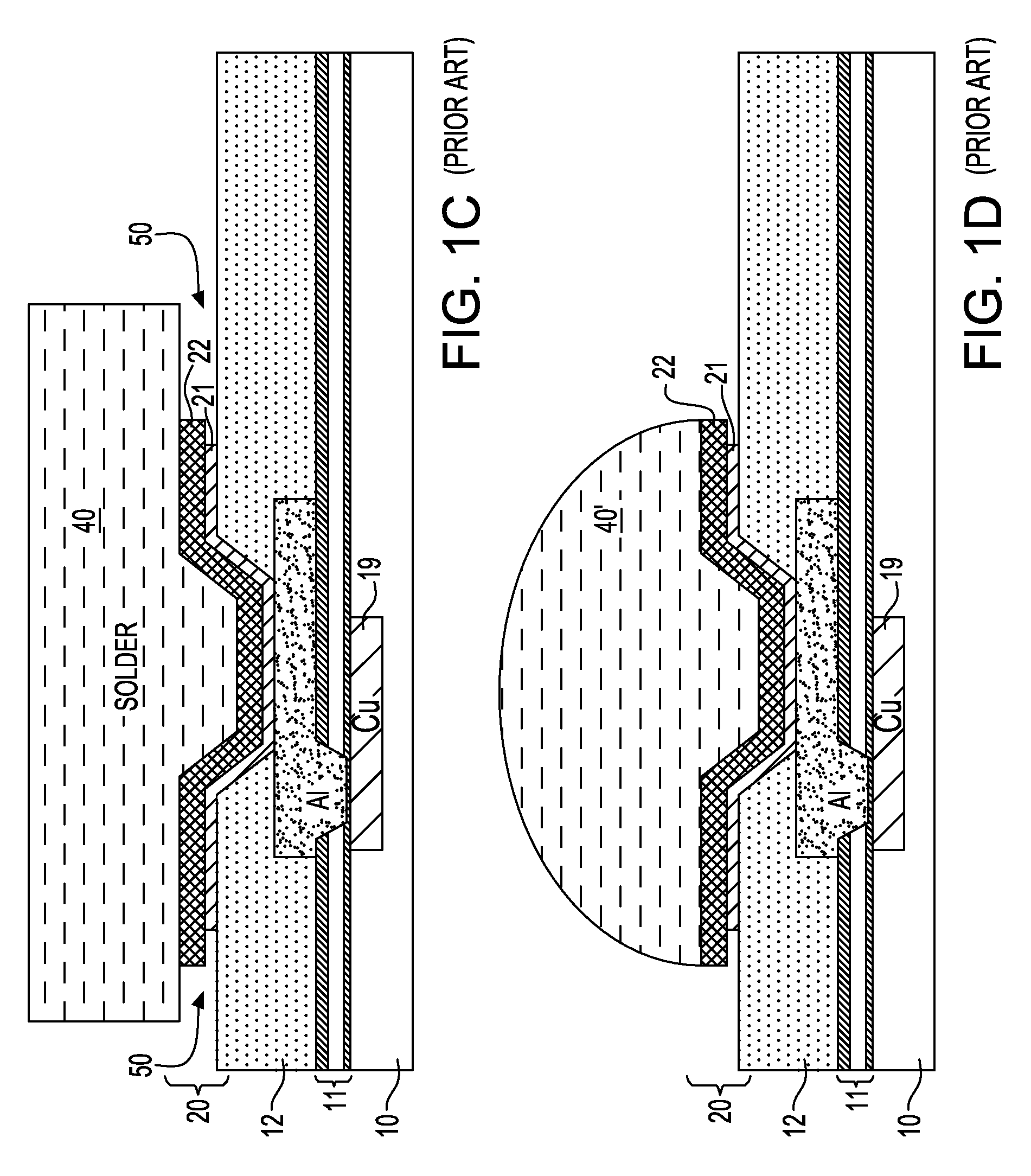Undercut-free blm process for pb-free and pb-reduced c4
a blm and c4 technology, applied in the field of semiconductor chip fabrication, can solve the problems of limiting the extendibility of current electroetch blm technology, cu and tiw base layers are associated with undercutting of blm, etc., and achieves the effects of reducing pitch, reducing undercutting amount, and increasing mechanical stability of solder bump connection
- Summary
- Abstract
- Description
- Claims
- Application Information
AI Technical Summary
Benefits of technology
Problems solved by technology
Method used
Image
Examples
Embodiment Construction
[0046]The process flow for forming a novel solder bump metallurgy according to the invention is now described with reference to FIGS. 2A-2C.
[0047]The process flow allows for the reliable fabrication of a BLM for Pb-Free and Pb-Reduced C4, without undercut. The process can be used with the TiW—Cu—Ni BLM and will solve the undercut problems. Alternatively, the disclosed process can also be used for a standard Pb-reduced BLM containing CrCu—e.g. TiW / CrCu / Cu / Ni. The process depends upon the replacement of electroetch of the Cu (and CrCu) and TiW layer with first a damascene CMP to create a localized Cu “plug” (or CrCu / Cu) only in the final via, and then a RIE process for TiW. The RIE process for TiW is successful because of the now complete removal of Cu (or CrCu) residues (normally present after wet or electroetching) in the field areas by CMP. The TiW—Cu layers are deposited by PVD, and the plug is formed by damascene CMP of Cu, stopping on the TiW. There are two embodiments from this...
PUM
 Login to View More
Login to View More Abstract
Description
Claims
Application Information
 Login to View More
Login to View More - Generate Ideas
- Intellectual Property
- Life Sciences
- Materials
- Tech Scout
- Unparalleled Data Quality
- Higher Quality Content
- 60% Fewer Hallucinations
Browse by: Latest US Patents, China's latest patents, Technical Efficacy Thesaurus, Application Domain, Technology Topic, Popular Technical Reports.
© 2025 PatSnap. All rights reserved.Legal|Privacy policy|Modern Slavery Act Transparency Statement|Sitemap|About US| Contact US: help@patsnap.com



